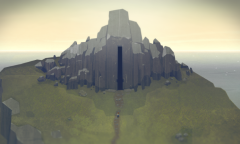By Vamien McKalin, | April 04, 2016

The headset is the most intriguing because according to the company, the headset is the first VR plus AR goggles ever brought to the market.
AMD is making some important announcements as of late. The most recent was made at the Games Developer Conference show where the company talked about its latest graphic cards and a new VR goggles.
The headset is the most intriguing because according to the company, the headset is the first VR plus AR goggles ever brought to the market. Usually, we see companies announcing these goggles as separate devices, but AMD is giving consumers the chance to experience the best of both worlds in a single device.
Like Us on Facebook
The headset is called the Sulon Q Head-Mounted Display, according to Engadget. AMD said the technology here is incredibly sophisticated, and we can't disagree because the idea sounds great. If it works, AMD could be onto something that could allow the company to create a whole new market.
When it comes down to design, the Sulon Q HMD looks great, but the internal specifications are the thing that will set this device apart. According to AMD, this thing is tether free, which means it doesn't require a powerful computer to get the most out of it.
The components inside this thing includes AMD FX-8800P processor with Radeon R7 graphics and a whopping 8GB of memory along with a 256GB solid-state drive (SSD). We have to wonder, how does AMD manage to fit all of this in a HMD, and whether or not the weight will become a problem. Not only that, will it suffer from excess heat? All these questions require an answer.
The next thing AMD showed off was it latest graphics card. The company calls this the Radeon Pro Duo, and it is said to be the fastest graphic card for commercial use right now. This thing has 16 TFLOPS compute power, which is more than twice what Nvidia's GTX Titan X brings to the table.
"Assuming the card doesn't throttle for heat or power issues, this would put performance at an almost identical level to a Radeon R9 Fury X Crossfire, with a gap of no more than 5%. Otherwise as this is Fiji, the rest of the specifications should not come as a surprise. Doubling up on Fijis gives us 64 ROPs and 256 texture units per GPU. And 4GB of HBM per GPU, clocked at 1Gbps for an effective memory bandwidth of 512GB/sec," according to Anandtech.
We should point out that AMD is also working on a chip known as Zen. There's a good chance this CPU could give the company the boost it needs to compete with Intel after years of stagnation. We understand AMD has been working on Zen since 2012, though the company has not yet come out with an official release date.
We suspect it might take some time, most likely somewhere around 2016 or earlier, depending on how things turn out on th engineering aspect. ChannelPro reports that Zen can incorporate almost twice the core of Intel's Xeon processor, something we deem as surprising, but seeing as AMD has failed in the past with its CPUs, we do not have enough faith in this new design.
-
Use of Coronavirus Pandemic Drones Raises Privacy Concerns: Drones Spread Fear, Local Officials Say

-
Coronavirus Hampers The Delivery Of Lockheed Martin F-35 Stealth Fighters For 2020

-
Instagram Speeds Up Plans to Add Account Memorialization Feature Due to COVID-19 Deaths

-
NASA: Perseverance Plans to Bring 'Mars Rock' to Earth in 2031

-
600 Dead And 3,000 In The Hospital as Iranians Believed Drinking High-Concentrations of Alcohol Can Cure The Coronavirus

-
600 Dead And 3,000 In The Hospital as Iranians Believed Drinking High-Concentrations of Alcohol Can Cure The Coronavirus

-
COVID-19: Doctors, Nurses Use Virtual Reality to Learn New Skills in Treating Coronavirus Patients













